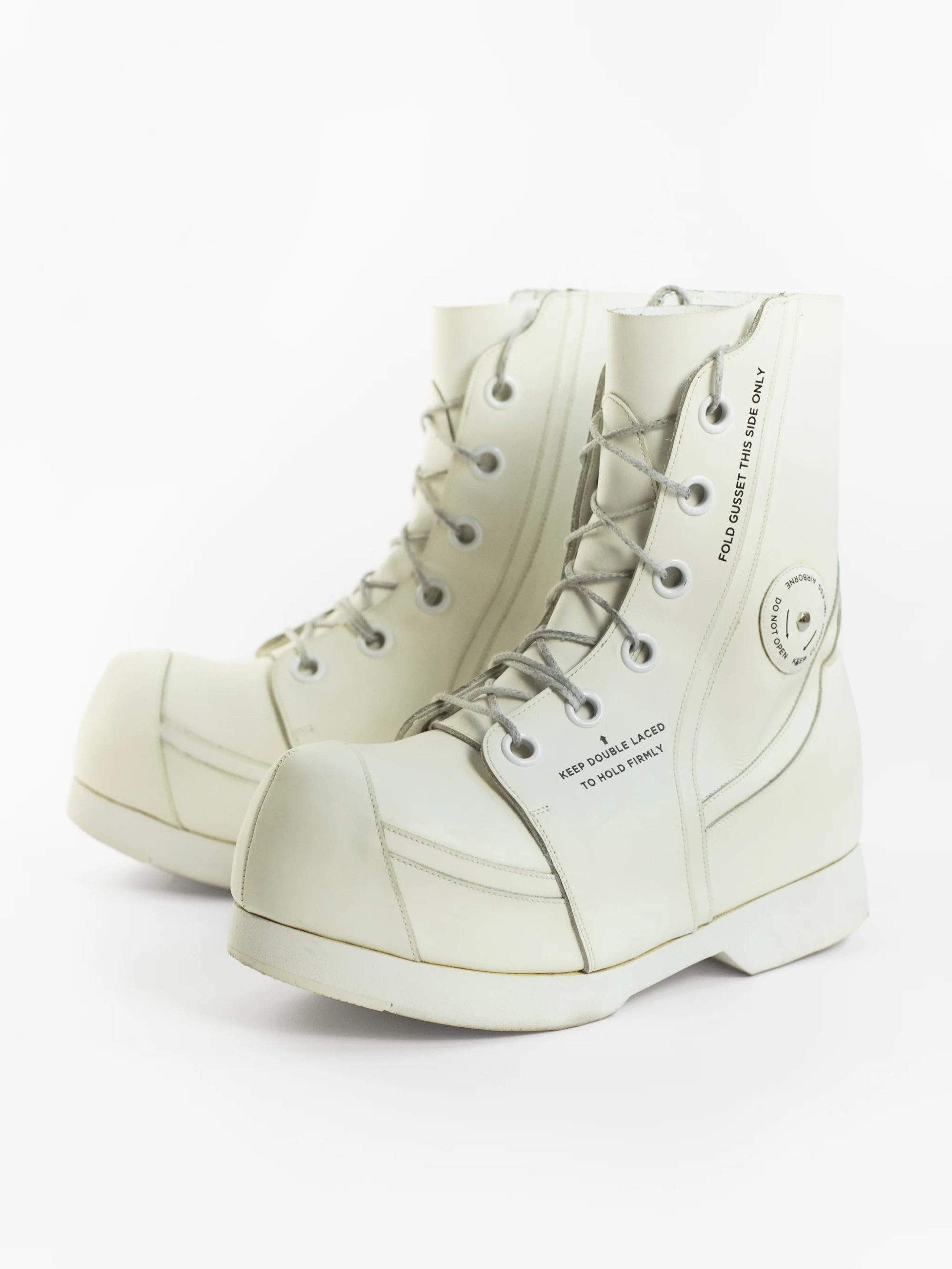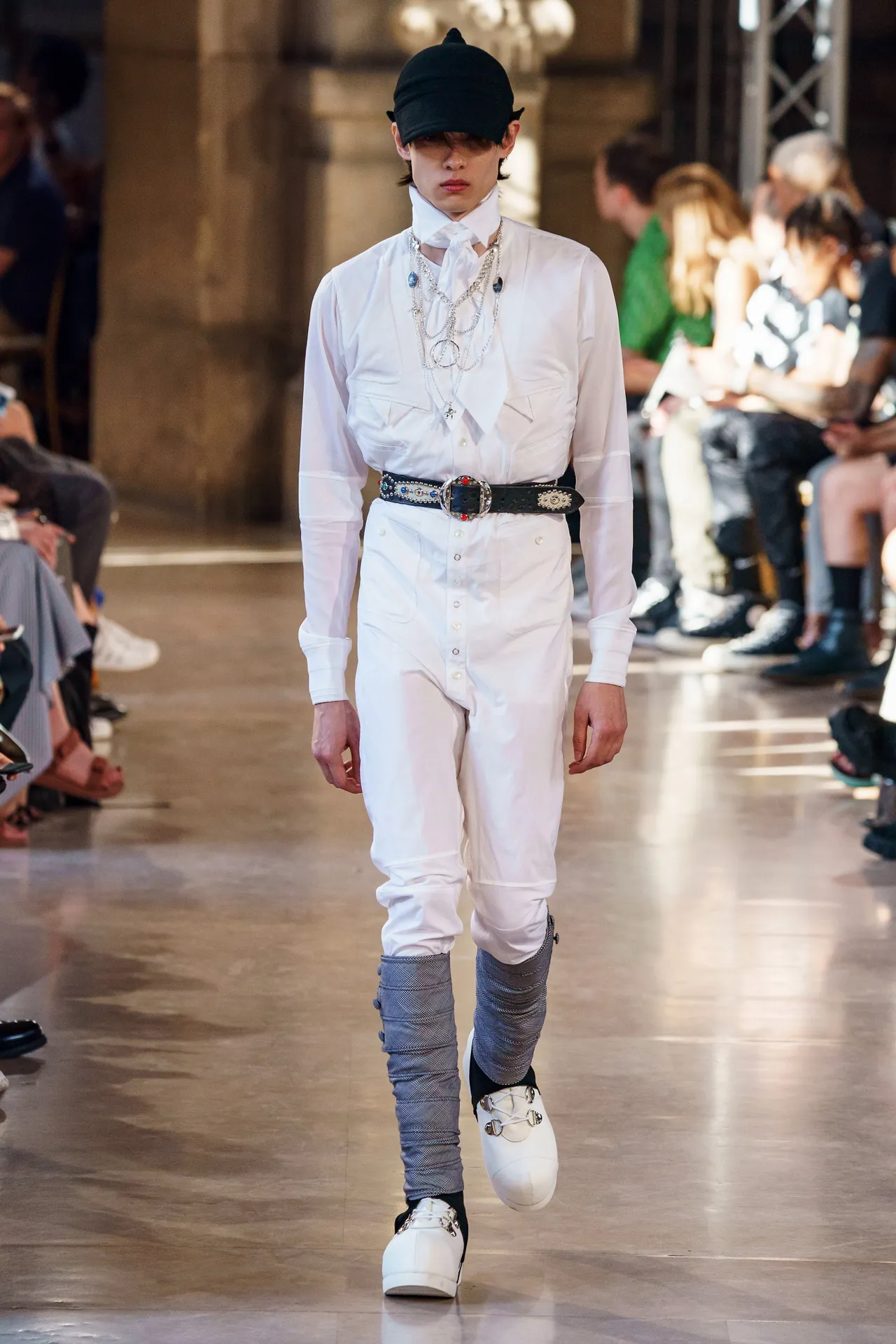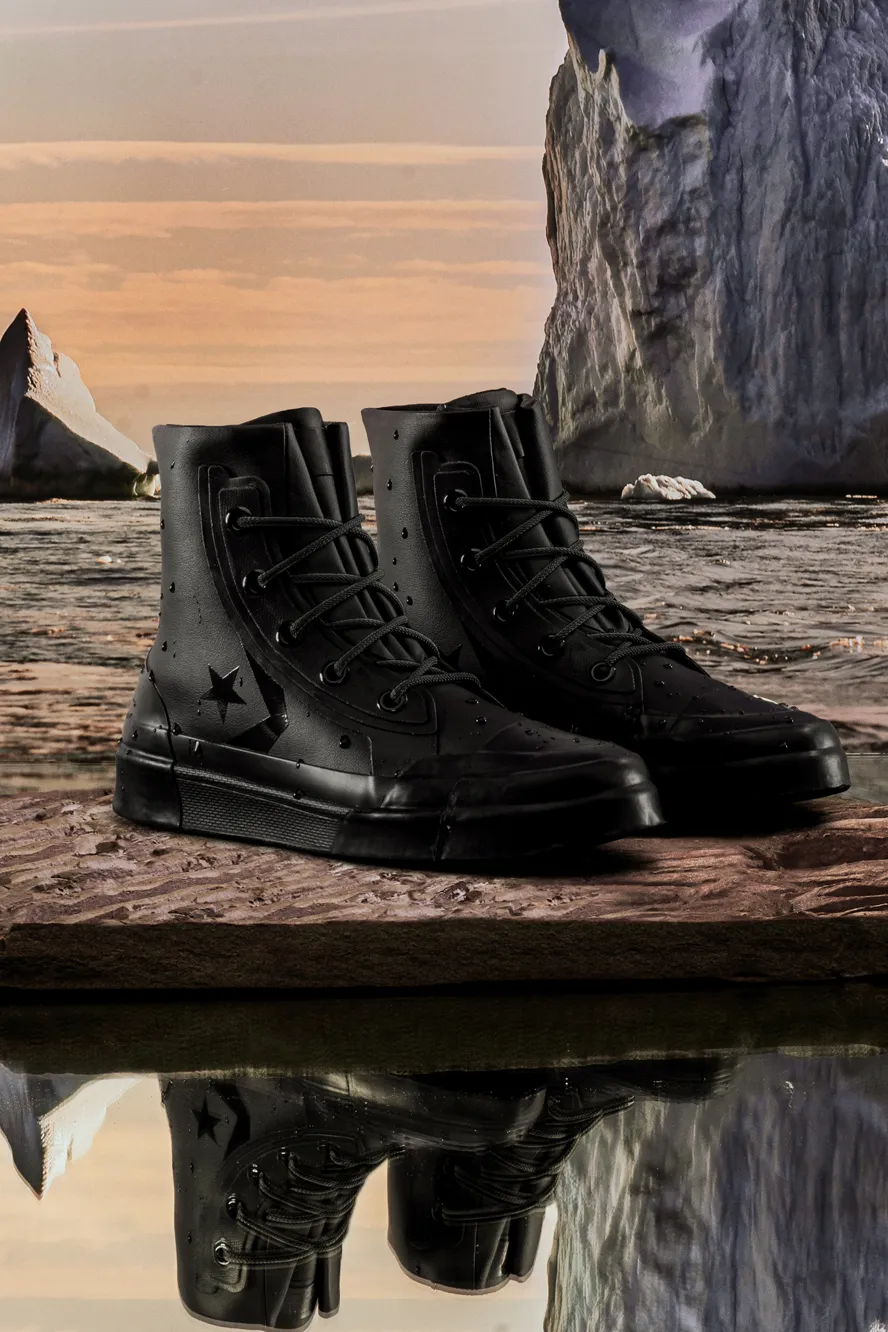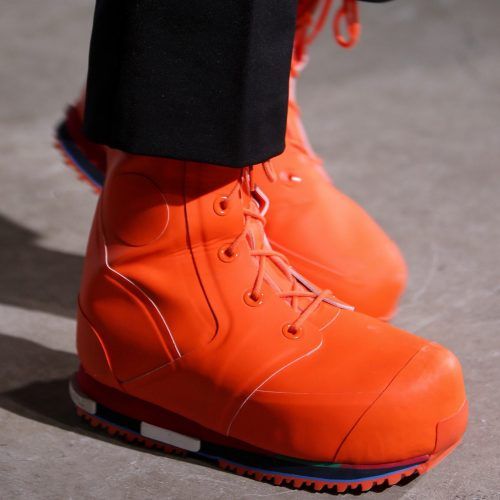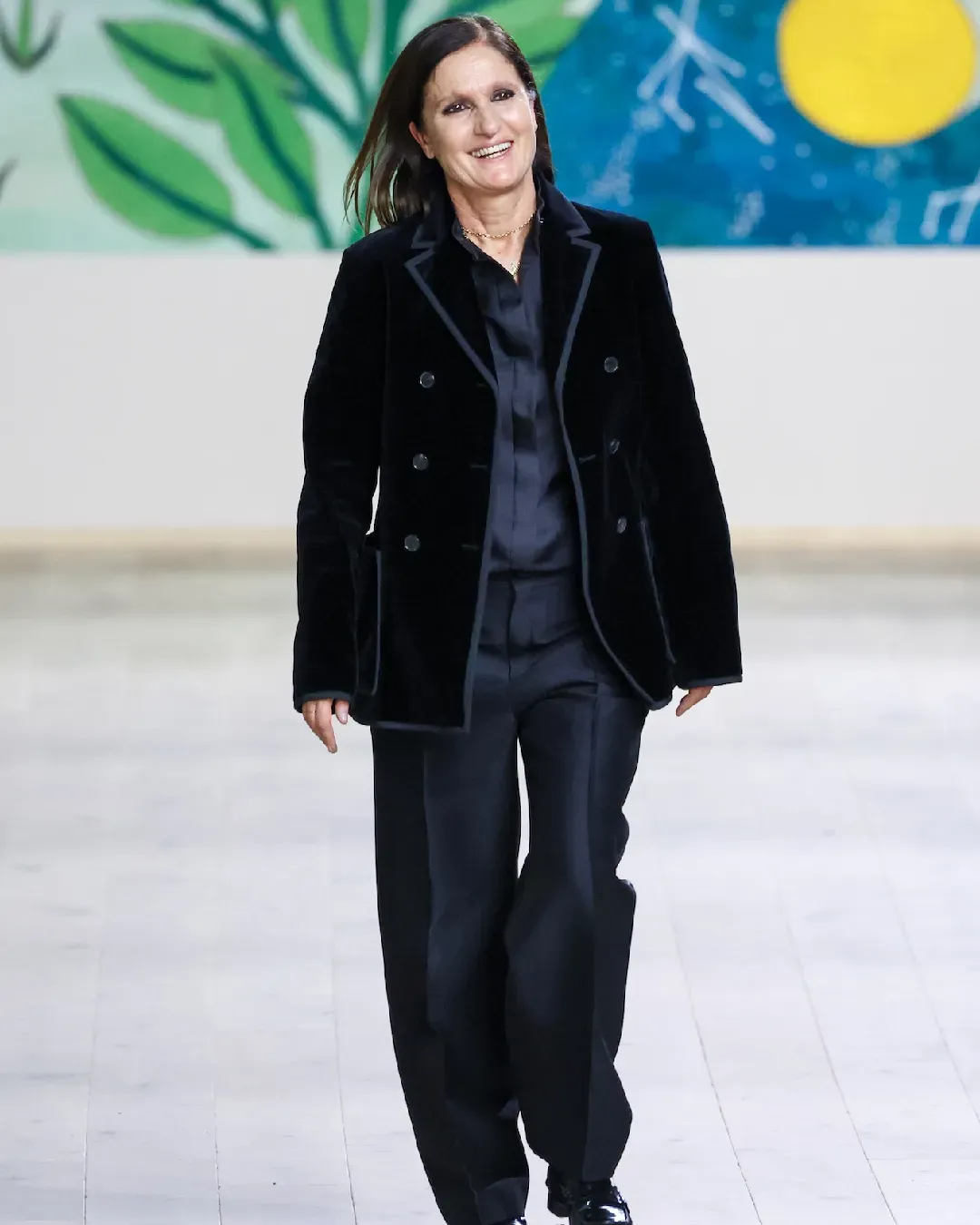
How the Bata Military Bunny Boot became a statement piece From the Korean War to Kanye's LA strolls
No shoe quite encapsulates and narrates the tastes of generations like the combat boot, from military discipline to subculture uprisings, traversing through the canonical fashion capitals. Models like Timberland 6 Inch Boot, Balenciaga Strike, Steroid, or Prada Monolith have emulated the look of military footwear on runways, but in the realm of "big boots," the true trailblazer is the Extreme Cold Vapor Barrier Boot, commonly known as Bunny Boot or Mickey Mouse Boot. First showcased on the runway for FW14 by Raf Simons in collaboration with Sterling Ruby—both in their original form and as an adidas branded remake—ECVBs have resurfaced in top street style looks thanks to celebrities who have rediscovered military aesthetics in recent times. In January, the Daily Mail paparazzied Kanye West strolling down Melrose Avenue with wife Bianca Censori sporting a pair of Bunny Boots. A month later, Playboi Carti and Luka Sabbat were seen in Los Angeles filming a music video also donning Bunny and Mickey Mouse Boots.
The Story of the Bunny Boot
Bunny Boots were the first footwear designed to withstand the cold for the US military, with the "Type I" model conceived during the Korean War. Named Mickey Mouse Boots due to their oversized aesthetic reminiscent of the beloved and enduring cartoon character's feet. The original design aimed for functionality: the boot weighed 1.25 kg, built to endure the harshest temperatures, down to -28.9 °C (-20 °F). However, during the Battle of Chosin in November to December 1950, the rubber sole design caused sweat to freeze inside, contributing to the frostbite deaths of many soldiers on the battlefield. To remedy this, the military had to rethink the design, producing the "Type II." The new boot, later dubbed White Bunny Boot, was heavier than Type I (40 lb or 0.22 kg) but capable of protecting soldiers from even more extreme cold—down to -65 °F (-54 °C). Designed with a vacuum-sealed construction, the boot repels air and moisture, ensuring dry and warm feet even in the most extreme conditions. The oversized silhouette allows for thick socks or insulating layers, and a depressurization valve ensures comfort during prolonged use. Additionally, many of the external graphic details, such as usage instructions and sizing, have been preserved over time as design elements.
Fashion Interpretation of the Bunny Boot
The boot, produced by Bata in 1985, is a true example of how military wear transcends its initial purpose and becomes fashionable. Besides the characteristic shape that made the shoe a timeless icon, the technical details have inspired some of the industry's most avant-garde designers, from Maria Grazia Chiuri to Yoon Ambush, and Takahiro Miyashita. But it's Raf Simons who turned ECVBs into a street style phenomenon. The Raf Simons x adidas Ozweego collaboration adeptly embodies the designer's ability to blend military heritage with a contemporary touch. Simons isn't alone in this sartorial odyssey: Takahiro Miyashita, with his eponymous brand The Soloist, embarked on a quest to redefine luxury through the lens of military utility. For FW19, he transformed US Army Bunnies into shoes that intertwine functionality with high fashion. Crafted in luxurious white leather, his reinterpretation retained the essence of the original boots—the graphic details, ornamental depressurization valve—infusing them with new elegance and wearability beyond sub-zero temperatures.
Yoon Ambush, in collaboration with Converse, took a different approach in drawing inspiration from the Bunny Boot. For her SS19, the designer enlarged the iconic silhouette of the Chuck 70 echoing that of military boots, creating an iteration that blurs the lines between form and function. In the realm of haute couture, Combat Boots 'DIORCAMP 2022' embraced the rubber texture and typography of the Bunny Boot, transforming them into a canvas for luxury branding—a fusion of workwear and couture. Long after the Korean War, the Bunny Boot finds runway space due to fashion's fascination with the role of military function and aesthetics. What was once a vital boot for the US military is now a fashionable luxury item flaunted by international stars like Kanye on the streets of Los Angeles—thanks to an oversized silhouette and timeless aesthetic, Bunny Boots testify to the power of functional design in mainstream culture.











































